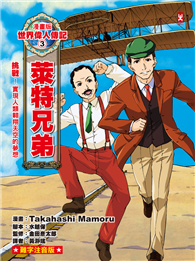In 1872, artist John Gast rendered one of the more famous depictions of nineteenth-century Western settlement, a painting titled American Progress. Gast’s painting celebrated the US colonization of the West as the culmination of industrial progress by foregrounding two relatively new technologies: the telegraph and the railroad. For Gast, as for so many other Americans, the Iron Horse seemed destined to serve as the literal engine by which the industrial acumen and God-given civilization of the expanding nation would conquer western lands and peoples. On Gast’s canvas, American Indians shuffled toward the painting’s edge. Faced with the locomotive’s irrepressible force, Gast assumed that native peoples, incapable of adapting to modernity, would have no choice but to fade away.
The Iron Horse in Indian Country shows how indigenous Americans across the trans-Mississippi West actively engaged with western railroads, not simply as passive bystanders to and victims of railroad expansion and dispossession as they have traditionally been cast. Foregrounding the hidden histories of native entanglements with the Iron Horse between the 1850s and 1930s, Alessandra La Rocca Link reveals how they played central roles as guides, passengers, entrepreneurs, wage-earners, and tribal citizens. Many Indians became wage earners (and, in some cases, wage payers) at a historic moment when the federal government sought to sequester natives on isolated reservations and limit their labors to agriculture. Indigenous political envoys made authorized and unauthorized visits to Washington, DC for negotiations among native leaders, railroad corporations, and the federal government, the beginnings of tribal and intertribal activism that would accelerate in the early twentieth century. The railroad provided Indigenous communities with a tool that they often put in the service of sustaining their cultural and material lives in the face of colonization. Indeed, the end of formal treaty relations with Native Americans in 1871 resulted from growing concerns about private negotiations taking place between corporations and tribal governments that directed the course of settlement in the region. Additionally, railroads facilitated a growing intertribal, Indian identity, as Native Americans used proliferating western railroad networks to visit one another, thus forging and renewing cultural, political, and social ties. Such ties were critical to the survival of Indigenous communities facing demographic decline over the course of the nineteenth century. Just as the West shrank with the arrival of the horse on the Plains, so too would it shrink as steam-powered locomotives brought far-flung locales into the traveling range of many Lakotas, Navajos, Cherokees, and others. Presenting a story that goes beyond the narrative of dispossession of Native land and resources, The Iron Horse in Indian Country demonstrates how the locomotive-powered settlement of the West was constantly contested, thwarted, and negotiated by the original inhabitants of the region who appropriated and repurposed this technology to transform it into a literal and figurative vehicle of survival.| FindBook |
有 1 項符合
The Iron Horse in Indian Country: Native Americans and Railroads in the Us West的圖書 |
 |
The Iron Horse in Indian Country: Native Americans and Railroads in the Us West 作者:Link 出版社:Oxford University Press 出版日期:2025-04-17 語言:英文 規格:平裝 / 248頁 / 普通級/ 初版 |
| 圖書館借閱 |
| 國家圖書館 | 全國圖書書目資訊網 | 國立公共資訊圖書館 | 電子書服務平台 | MetaCat 跨館整合查詢 |
| 臺北市立圖書館 | 新北市立圖書館 | 基隆市公共圖書館 | 桃園市立圖書館 | 新竹縣公共圖書館 |
| 苗栗縣立圖書館 | 臺中市立圖書館 | 彰化縣公共圖書館 | 南投縣文化局 | 雲林縣公共圖書館 |
| 嘉義縣圖書館 | 臺南市立圖書館 | 高雄市立圖書館 | 屏東縣公共圖書館 | 宜蘭縣公共圖書館 |
| 花蓮縣文化局 | 臺東縣文化處 |
|
|
圖書介紹 - 資料來源:博客來 評分:
圖書名稱:The Iron Horse in Indian Country: Native Americans and Railroads in the Us West
|











